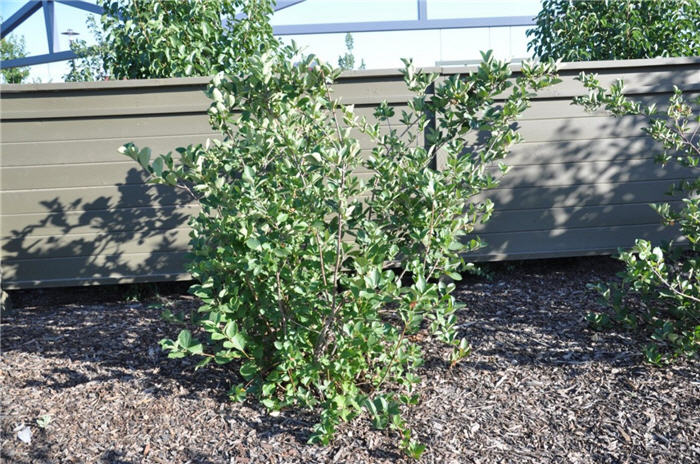| Botanical Name: Aronia melanocarpa var. elata | |
| Common Name: Tall Black Chokeberry |

-
Anatomy
-
Culture
-
Design
Plant Type
Shrub
Height Range
3-6'
Flower Color
White
Flower Season
Spring
Leaf Color
Dark Green
Bark Color
Brown
Fruit Color
Black, Blue
Fruit Season
Winter, Fall, Persistent
Sun
Full, Half
Water
Low, Medium
Growth Rate
Moderate, Slow
Soil Type
Sandy, Clay, Loam, Rocky, Unparticular
Soil Condition
Average, Rich, Poor, Well-drained, Dry
Soil pH
Acid, Neutral, Basic
Adverse Factors
n/a
Design Styles
Formal, Meadow, Mediterranean, Ranch, Woodland
Accenting Features
Fall Color, Showy Flowers
Seasonal Interest
Winter, Spring, Summer, Fall
Location Uses
Entry, Shrub Border, Foundation, Walls / Fences
Special Uses
Cut Flowers, Hedge, Screen, Mass Planting, Small Spaces
Attracts Wildlife
Birds
Information by: Stephanie Duer
Photographer:
Photographer:
-
Description
-
Notes
'Elata' is a slightly taller, narrower form of A. melanocarpa, with less of a tendency to sucker, growing 4 to 6 feet tall and wide. Clusters of white spring flowers are followed by fruit that ripens to blue-black in the fall and persists into the winter months. Leaves are oval to elliptical and glossy green, turning a brilliant red in the fall. An exceptional landscape plant, working well in traditional landscapes, habitat and bird gardens, and more natural or woodland landscapes.
Grow in well-drained soil in full sun to part shade. Tolerant of wide range of soils, including both dry and boggy soils. Best fruit production occurs in full sun. Spreads by root suckers to form colonies, though it does so slowly and is not aggressive. Rarely requires pruning; selectively remove branches to control height (see Guides).